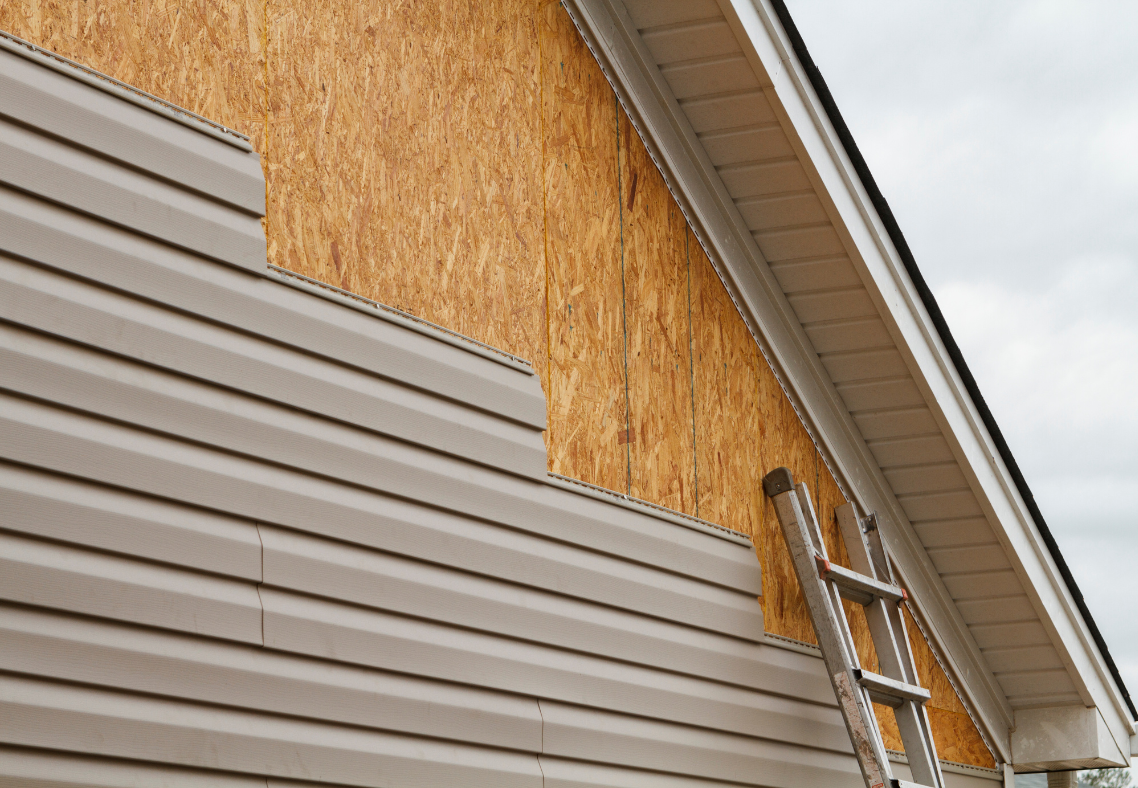How To Repair Siding From Bee Damage In Maryland
Roof Right: Exterior Home Remodeling Specialists in Maryland Contact UsSchedule A Free EstimateWhen most homeowners in Maryland think of siding damage, they imagine heavy storms, flying debris, or long-term moisture exposure. However, one often overlooked threat—particularly in the spring and summer months—is damage caused by bees, especially carpenter bees. These industrious insects can create significant structural and cosmetic issues for your siding if left unchecked. If you’ve noticed round holes in your wood siding or strange buzzing activity near the eaves or soffits of your home, you might be dealing with a bee infestation. Fortunately, there are clear steps you can take to address the issue, repair the damage, and prevent future problems. This blog will guide Maryland homeowners through the process of identifying bee damage, safely removing the bees, and repairing your siding effectively.
Answering The Question: How To Repair Siding From Bee Damage In Maryland?
Common Signs of Bee Damage to Siding
In Maryland, the most common culprit of siding damage is the carpenter bee. Unlike honeybees, carpenter bees do not live in hives. Instead, they burrow into wood, creating tunnels for laying eggs. Signs of carpenter bee damage include:
- Perfectly round holes about ½ inch in diameter in your wood siding, trim, soffits, or fascia boards
- Sawdust or “frass” accumulating below entry holes
- Buzzing sounds coming from behind the siding
- Discoloration or staining around the holes due to nesting activity
- Woodpecker damage nearby (attracted by bee larvae)
Carpenter bees are most active in Maryland between April and August, making it important to inspect your home’s exterior thoroughly during those months.
Step 1: Identify the Problem and the Pest
Before jumping into repairs, you’ll need to confirm the type of insect responsible. Maryland is home to a variety of stinging insects including:
- Carpenter bees – solitary, non-aggressive, and the most common culprit of wood boring
- Wasps – build paper nests and may use small cavities
- Honeybees – usually colonize in walls and may require relocation due to environmental protections
If you’re uncertain about what species you’re dealing with—or if you suspect honeybees—it’s a good idea to contact a licensed pest control expert or even a local beekeeper to safely assess and remove the insects.
Step 2: Remove Bees and Clean the Area
After you’ve identified and dealt with the infestation, the next step is to remove the bees and clean out any debris from the nesting holes. Here’s how:
For Carpenter Bees:
- Apply insecticide dust into the holes in the late afternoon or early evening when bees are less active.
- Wait at least 24–48 hours to ensure all bees are gone.
- Use a small wire brush to clean out tunnels and dislodge any debris.
- If the infestation was extensive, you may need to open up the wall or siding to assess internal damage.
Caution: Always wear gloves, protective eyewear, and a mask when applying insecticides or cleaning bee tunnels.
Step 3: Repair the Damage
Once the bees are gone and the holes are cleaned, it’s time to repair your siding. Depending on the extent of the damage, this can be a small DIY job or a larger project requiring professional expertise.
Small-Scale Repairs:
- Fill Holes – Use wood filler, epoxy, or exterior-grade caulk to plug each hole.
- Sand Smooth – Once dry, sand the area flush with the surrounding siding.
- Prime and Paint – Apply a primer coat followed by high-quality exterior paint to restore appearance and protect the area from weather and insects.
Larger Repairs:
If the damage is extensive—such as rotted wood, structural weakening, or multiple tunnels—you may need to:
- Remove and replace full siding boards
- Reinforce the underlying structure
- Install new sheathing or flashing beneath the siding
- Replace damaged trim, fascia, or soffits
This level of repair is best handled by a professional contractor like Roof Right, who can ensure materials are properly sealed and flashed to prevent water intrusion.
Step 4: Prevent Future Bee Damage
Repairing the damage is only half the battle. If your siding was attractive to carpenter bees once, they’ll likely return unless you take steps to deter future nesting.
Preventative Measures Include:
- Paint or Seal All Exposed Wood: Carpenter bees prefer untreated wood. Painted or stained surfaces are far less appealing.
- Install Insect Screens: Seal gaps between siding panels, trim, and soffits with mesh screens or metal flashing.
- Apply Citrus or Peppermint Oil: Natural deterrents like citrus oil sprays can repel bees from vulnerable areas.
- Use Carpenter Bee Traps: Strategically placed wooden traps lure bees away from your home.
- Maintain Regular Inspections: Check siding each spring and fall for new signs of boring or frass.
Homeowners in forested or rural areas of Maryland, such as Carroll and Frederick Counties, should be especially diligent, as these regions often see increased carpenter bee activity.
Why Professional Help Matters in Maryland
Repairing siding and managing pests may seem simple at first, but underlying damage often goes unnoticed until it becomes a bigger problem. Here’s why hiring a local expert like Roof Right makes all the difference:
- Accurate Damage Assessment: We evaluate whether the infestation caused rot, moisture damage, or structural concerns.
- Local Climate Expertise: Our team understands how Maryland’s humid summers and icy winters impact siding durability and repair materials.
- Code-Compliant Repairs: We ensure all repairs meet Maryland building codes and HOA guidelines, especially in historic zones like Annapolis or Ellicott City.
- Material Matching: We carefully match replacement siding materials to your home’s existing color and profile.
Contact Roof Right for Siding Repair Services In Maryland
If you’ve discovered signs of bee damage on your home’s siding, don’t wait until the next swarm to take action. At Roof Right, we specialize in identifying, repairing, and protecting Maryland homes from the hidden consequences of pest damage. Whether you need small cosmetic fixes or complete siding panel replacement, our team delivers high-quality, lasting results you can count on. Our Maryland-based professionals serve homeowners in Hampstead, Westminster, Frederick, Baltimore, and beyond. We’ll inspect your siding, assess the extent of the damage, and provide a customized repair plan that keeps bees—and other pests—out for good. Contact Roof Right today to schedule your siding inspection and repair consultation. We’re here to help you protect your investment, restore your home’s beauty, and enjoy peace of mind all year long.
Areas We Serve
If you're looking for a roof contractor in Maryland, give Roof Right a call today at (410)-374-5923 to schedule an appointment!
Carroll County
Howard County
Clarksville, Columbia, Elkridge, Ellicott City, Fulton, Jessup, Laurel, Woodstock
Montgomery County
Baltimore County
Baldwin, Bradshaw, Carney, Cockeysville, Glen Arm, Hunt Valley, Jacksonville, Kingsville, Lutherville, Nottingham, Overlea, Owings Mills, Parkton, Parkville, Perry Hall, Phoenix, Pikesville, Reisterstown, Sparks, Timonium, Towson, White Marsh

